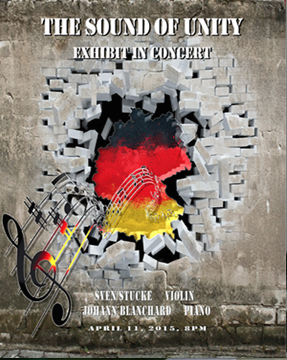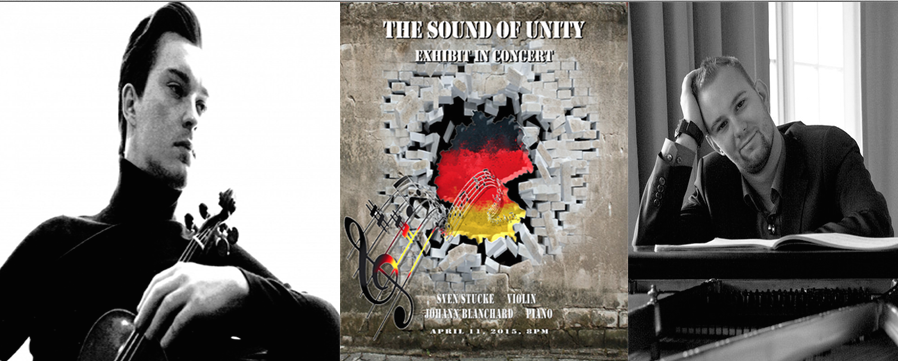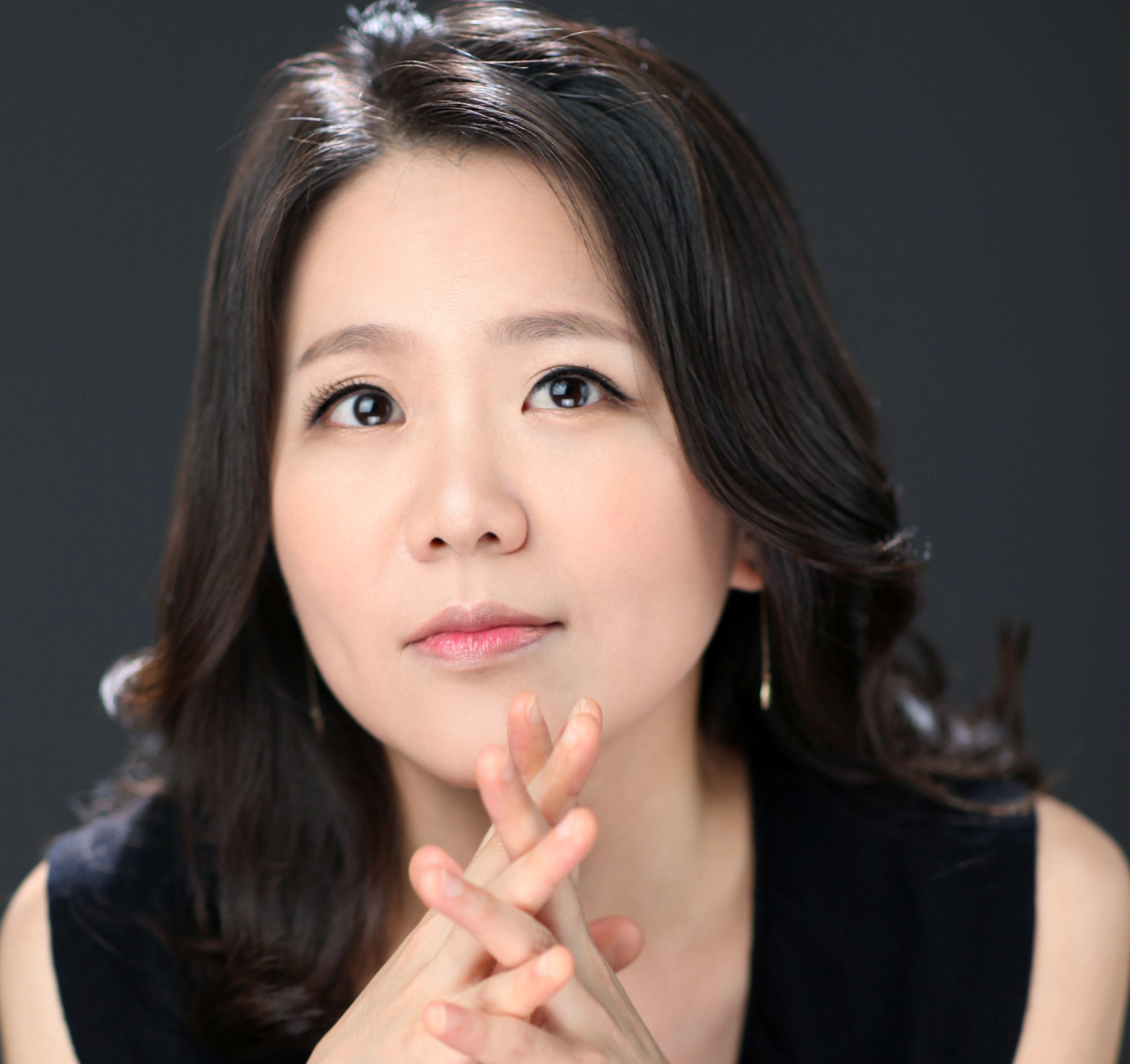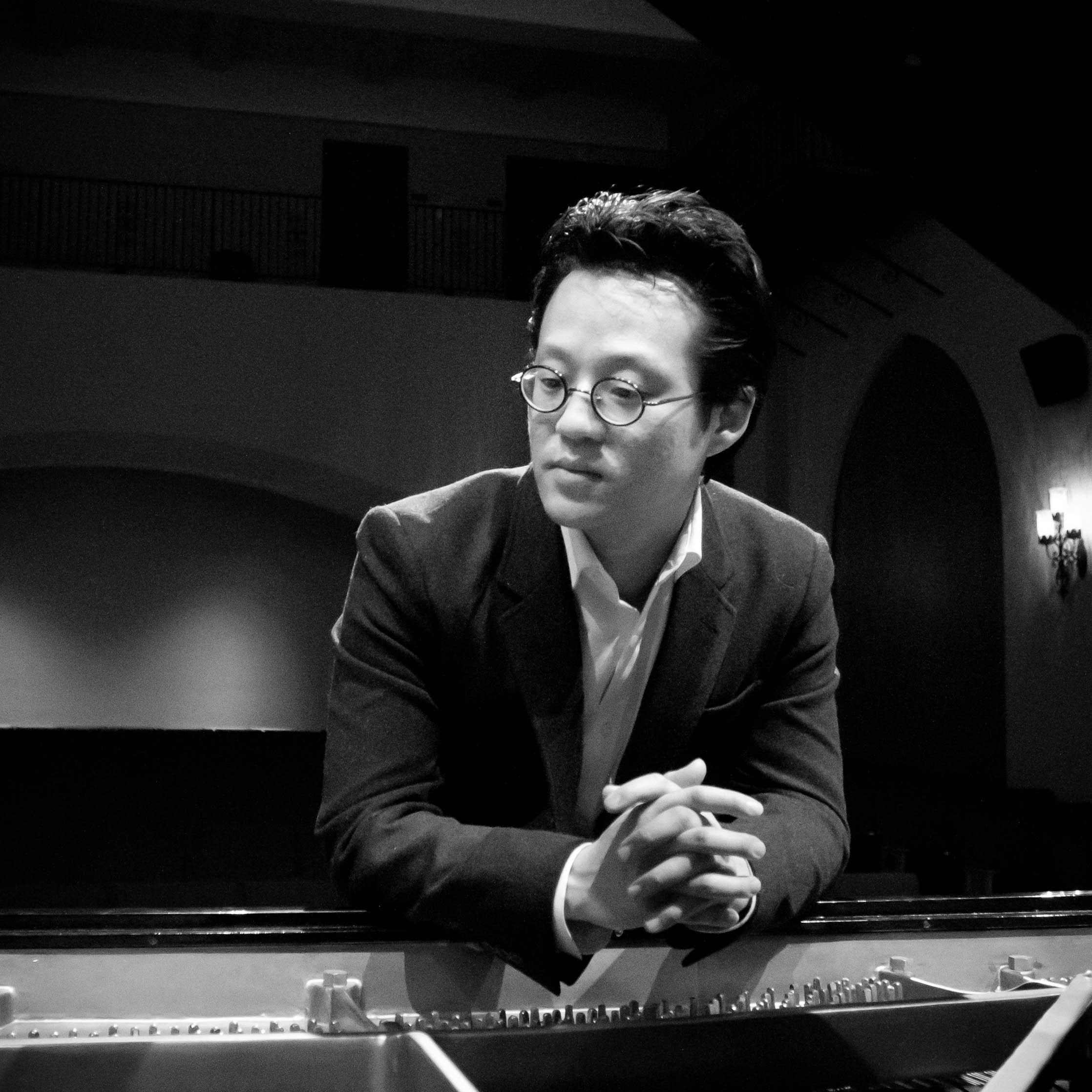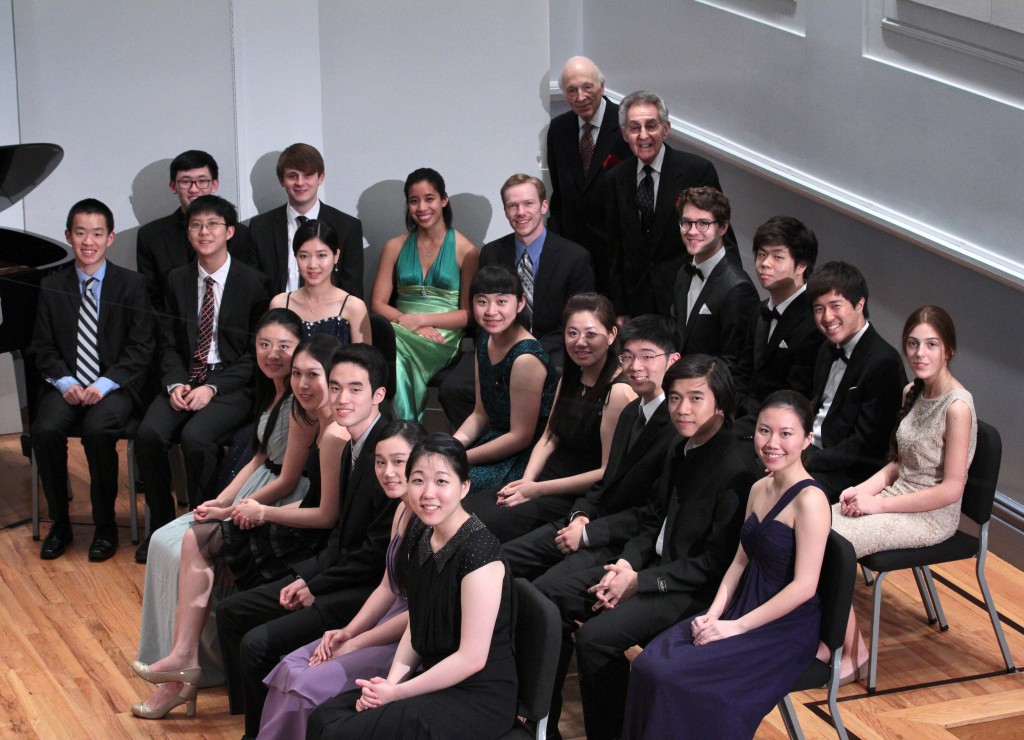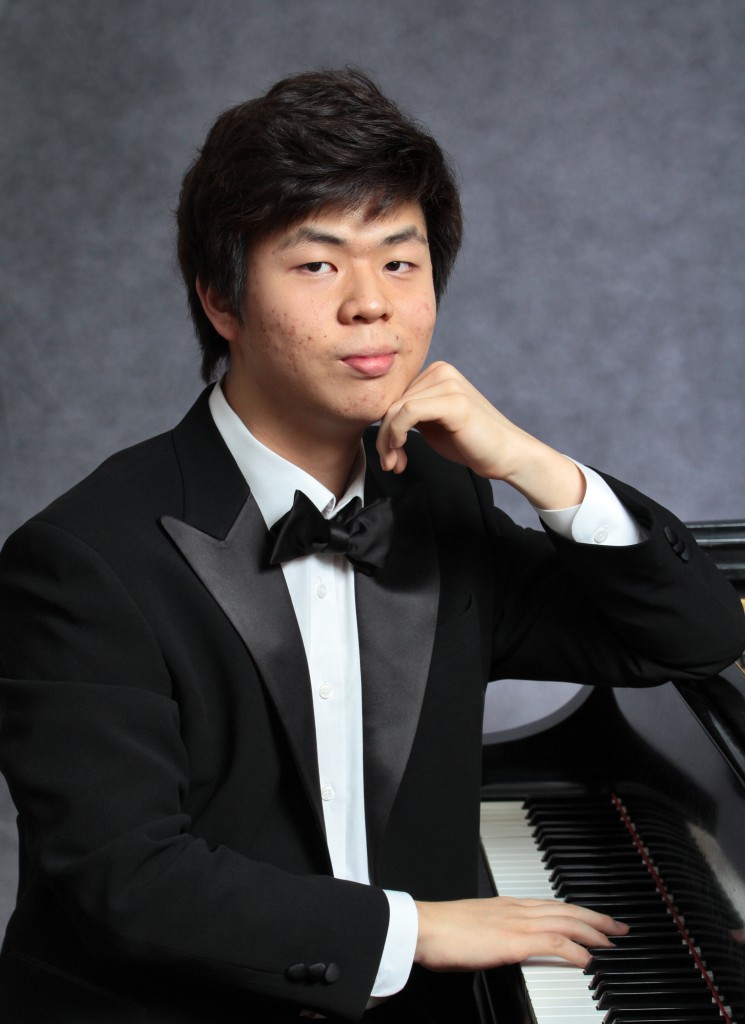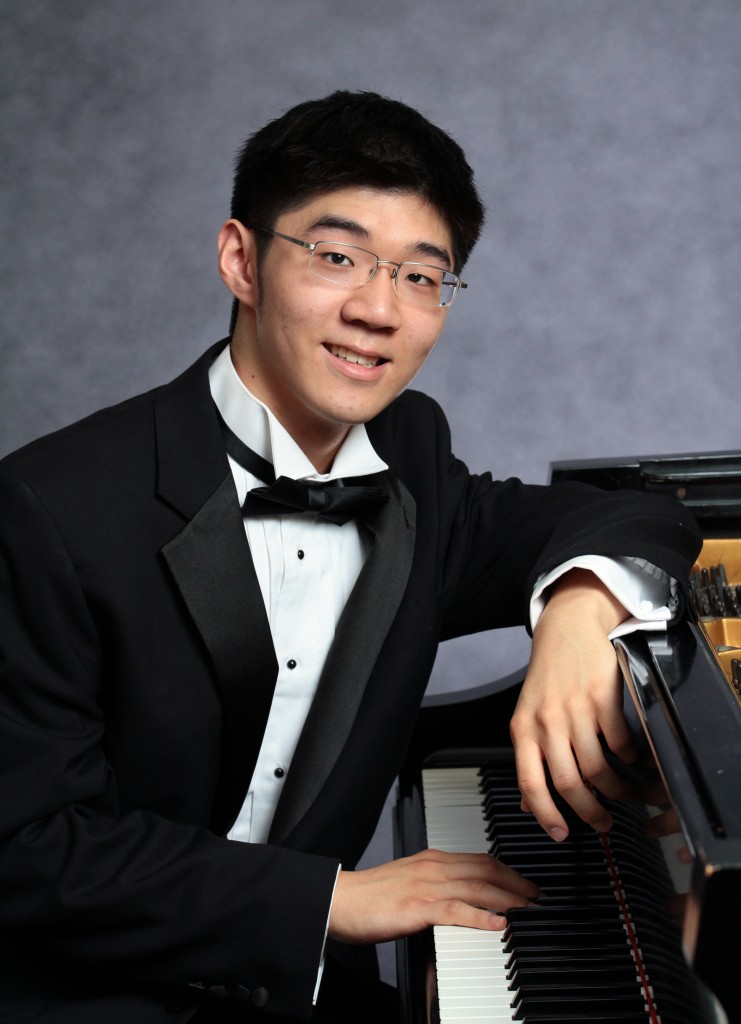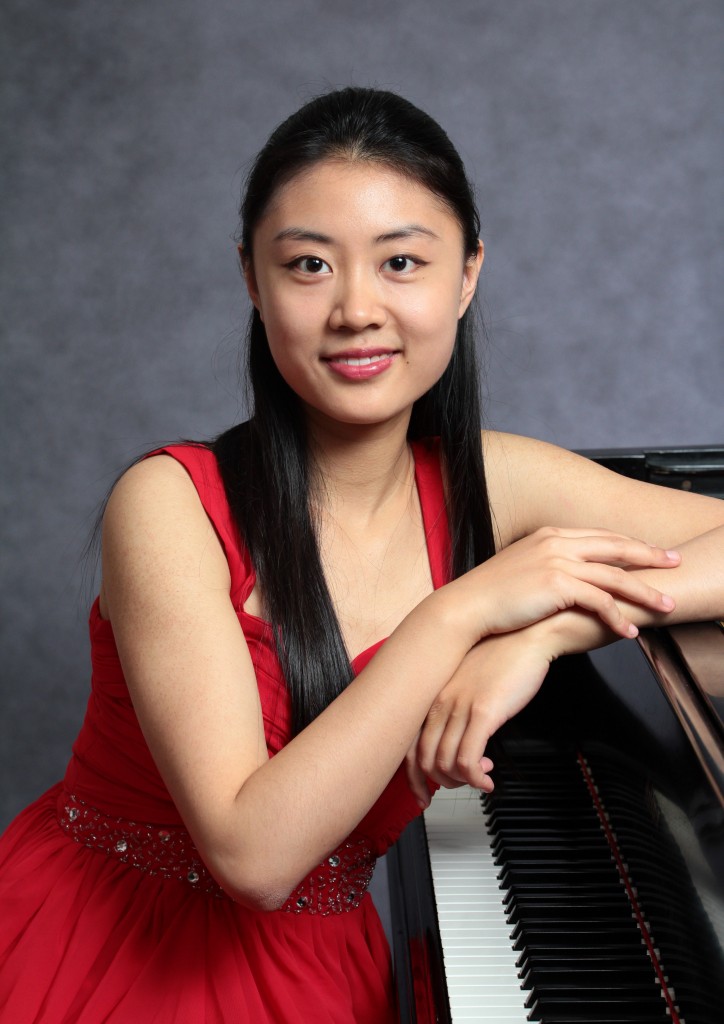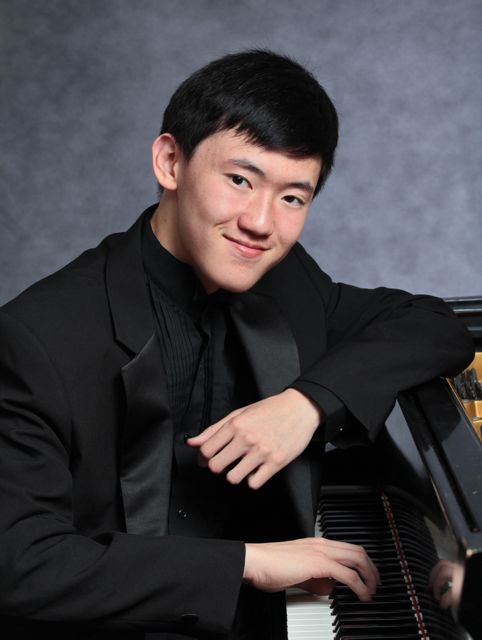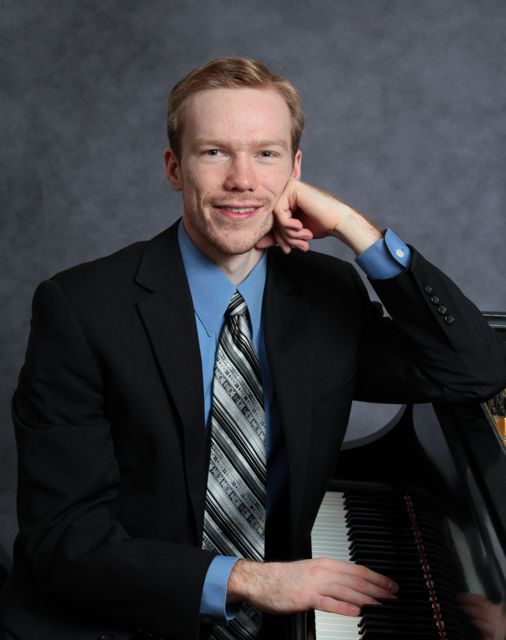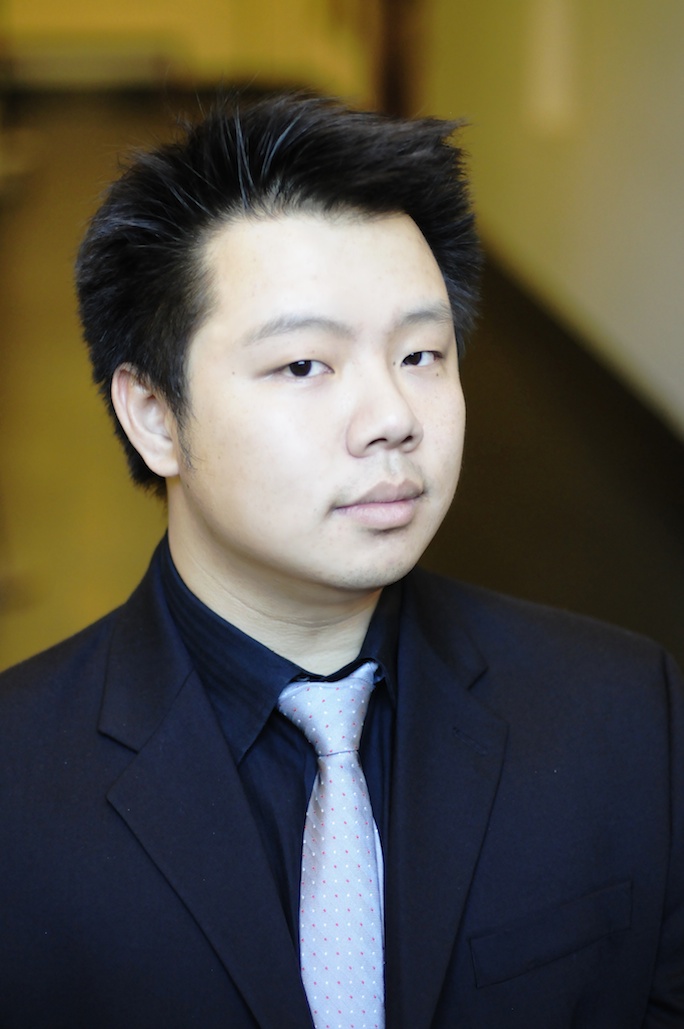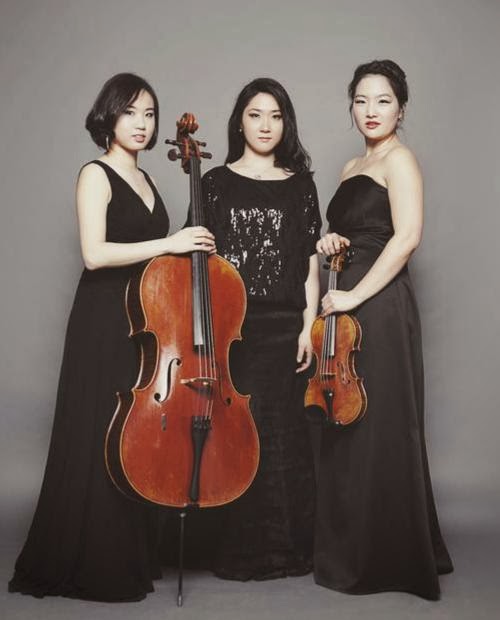The Sound of Unity: Exhibit in Concert
Sven Stucke, violin; Johann Blanchard, piano
St. Peter’s Church, New York, NY
April 11, 2015
In celebration of the 25th Anniversary of the German Reunification, W&T Arts Promotion presented a moving and informative evening of film and music that was, by virtue of its very historical background, far from celebratory until the very end. Recounting the division of Germany, heartbreaking separations of loved ones, struggles of the East Germans that included oppression, failed efforts to escape, and death, the chief rays of hope were US contributions and the Berlin Airlift – that is, until the film’s apotheosis, the final reunification of the nation. It was all an important reminder of the mistakes and horrors the world must avoid.
As described on the presenter’s website, the event combined “exclusive digital exhibition materials provided by Stiftung Gedenkstätten Sachsen-Anhalt with carefully programmed live music to replicate a neo-silent film experience.” The term “silent film” was not quite accurate (hence the prefix “neo” I suppose), because there were some spoken interviews in the film while live music was being performed (not so respectful to the music, in my opinion); in many respects, however, the stated mission of the presenters was successful, that is, to tell this tragic but ultimately triumphant chapter in the world’s history.
Assigned as a music reviewer, I was prepared to focus on the two German musicians, violinist Sven Stucke with pianist Johann Blanchard, and some accompanying atmospheric film footage, but the evening, as I suggested, turned out to be more about the film. Such events are not the ideal forum for reviewing musicians, but both performers acquitted themselves of the task remarkably well.
Substantial text on the history was projected onto one wall with dramatic images, which directed one’s attention largely away from these two engaging musicians, so the effect was that of a soundtrack heard live, probably not quite the best use of the talents that these classical musicians have honed. With apologies to The Buggles, the evening brought to mind the famous song “Video Killed the Radio Star” – in a classical context. Each musical work was chosen to flow seamlessly into the next (with no introductions or pauses), but a measure of musical integrity was sacrificed in the process, despite much superb playing. Perhaps it also didn’t help that I happened to sit just between the musicians and the wall on which the film turned out to be projected – a whiplash-inducing situation which forced a choice between performers and film as a focus. Some misspellings and unidiomatic English (in captions and text) required several readings of various parts, so that even less attention was left for these fine musicians.
The musical aspect suffered some of its own compromises as well. The very first musical selections were excerpts from Vitali’s Chaconne in G Minor and Bruch’s Violin Concerto No. 1. One had barely heard what seemed like a few moments of the Chaconne from Mr. Stucke, an excellent violinist, when it was time to move on to the Bruch, again an excerpt – and with piano reduction. Even in a composer’s arrangement and with an expert collaborator in Mr. Blanchard, such a reading is not as fulfilling as one with an orchestra, and any experienced musician cannot help comparing.
Playing-wise, Mr. Stucke displayed effortless precision in his intonation and intense expressiveness. In addition, he showed impressive stamina, playing for around ninety minutes straight, with almost no rest, though he did have a two-minute break while the pianist played “Von fremden Ländern und Menschen” from Schumann’s Kinderszenen – very sensitively, one should add. In other words, Mr. Stucke played what amounted to a generous full-length violin recital, but with no intermission, a demanding feat, for which a performer might expect to reap big artistic rewards. Instead, the program resembled a musical “potluck” in service to a documentary. Let there be no mistake – this evening was indeed informative, the marking of this anniversary was extremely important, and the footage used was quite moving. It just seems that, if the presenter of it is also the manager of these two artists (as it appears from the website), more caution needs to be taken with their art.
The pianist Mr. Blanchard matched the violinist in outlays of energy, though occasionally I found him overly deferential to the violin part. He is a skillful and versatile musician who has ample credentials, including a recently recorded CD of the music of Chaminade.
The program continued with two Shostakovich Preludes (Op. 34, No. 10 and 24), plus the Perpetuum Mobile from Ravel’s Violin Sonata No. 2, and selections from Dvořák’s Four Romantic Pieces, Op. 75. All were played well, to complement scenes that shifted from mournful to frenzied, from nostalgic to diabolic. The inclusion of Devil’s Dance, by John Williams, was an effective touch. Perhaps the use of more such film music would strike musicians in the audience as less of a compromise than a pastiche of concert excerpts.
The largest share of the program went to music by Lera Auerbach, a composer I greatly admire. Two Preludes were selected from Op. 46 (Nos. 15 and 16) and the Sonata No. 2 for Violin and Piano, Op. 63, followed. At one point during extremely bleak and quiet music, a voice in the film burst forth loudly completely breaking the spell, but the pieces were nonetheless hauntingly played. There were several such cases where the synchronization seemed awry somehow.
The Sonata, which is subtitled September 11, was powerful in evoking tragedy and devastation, albeit from a different source and point in history than East Germany’s. I hope to hear it performed live all over again, but with my own imagined (and unfortunately remembered) “footage.”
Poulenc’s Sonata, FP 119, was the last large work and was also a successful collaboration between pianist and violinist. Again, one would like to hear the duo perform it without the accompanying mental exercise of wondering how this or that was meant to fit with the film. In any case the duo should perform it often.
The program concluded with– what else? – Beethoven’s Ode to Joy in a Blanchard/Stucke arrangement. It is a hard thing to pull off the nobility and scope of this symphonic movement without a full orchestra, but the duo coped well, starting softly and slowly before bursting into a pyrotechnic Paganini-esque display. There were quite a few “un-Beethovenian” sounds in the ramped up violin part, and the piano part sounded somewhat improvised – probably another ad hoc element on this program – but it all built to enough of a climax to close the program with spirit.

